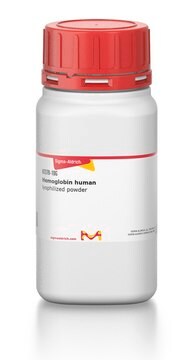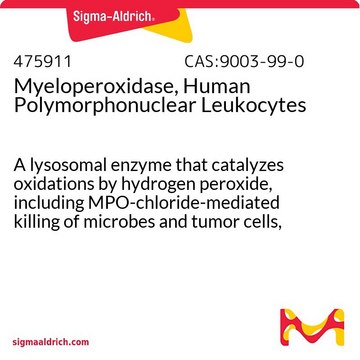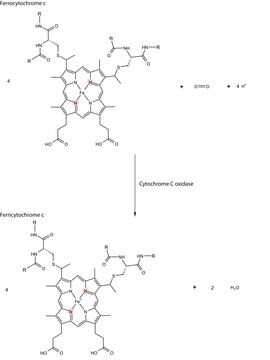Key Documents
A3672
Azurin
from Pseudomonas aeruginosa, lyophilized powder
About This Item
Polecane produkty
pochodzenie biologiczne
Pseudomonas aeruginosa
Poziom jakości
Postać
lyophilized powder
skład
Protein, ≥65% Lowry
stężenie
≥65.0% (Lowry)
metody
toxicology assay: suitable
rozpuszczalność
water: soluble 1—1.1 mg/mL, clear, blue (light blue to blue)
numer dostępu UniProt
temp. przechowywania
−20°C
informacje o genach
Pseudomonas aeruginosa ... AZU(878046)
Szukasz podobnych produktów? Odwiedź Przewodnik dotyczący porównywania produktów
Opis ogólny
Zastosowanie
- in the cytotoxicity and cell viability studies in human osteosarcoma cell line
- for the functionalization of silicon nitride cantilevers for interaction studies
- for coating gold surface and insulating functionalized oxide surfaces of silicon oxide and mica
Działania biochem./fizjol.
Postać fizyczna
Kod klasy składowania
11 - Combustible Solids
Klasa zagrożenia wodnego (WGK)
WGK 3
Temperatura zapłonu (°F)
Not applicable
Temperatura zapłonu (°C)
Not applicable
Środki ochrony indywidualnej
Eyeshields, Gloves, type N95 (US)
Certyfikaty analizy (CoA)
Poszukaj Certyfikaty analizy (CoA), wpisując numer partii/serii produktów. Numery serii i partii można znaleźć na etykiecie produktu po słowach „seria” lub „partia”.
Masz już ten produkt?
Dokumenty związane z niedawno zakupionymi produktami zostały zamieszczone w Bibliotece dokumentów.
Nasz zespół naukowców ma doświadczenie we wszystkich obszarach badań, w tym w naukach przyrodniczych, materiałoznawstwie, syntezie chemicznej, chromatografii, analityce i wielu innych dziedzinach.
Skontaktuj się z zespołem ds. pomocy technicznej








